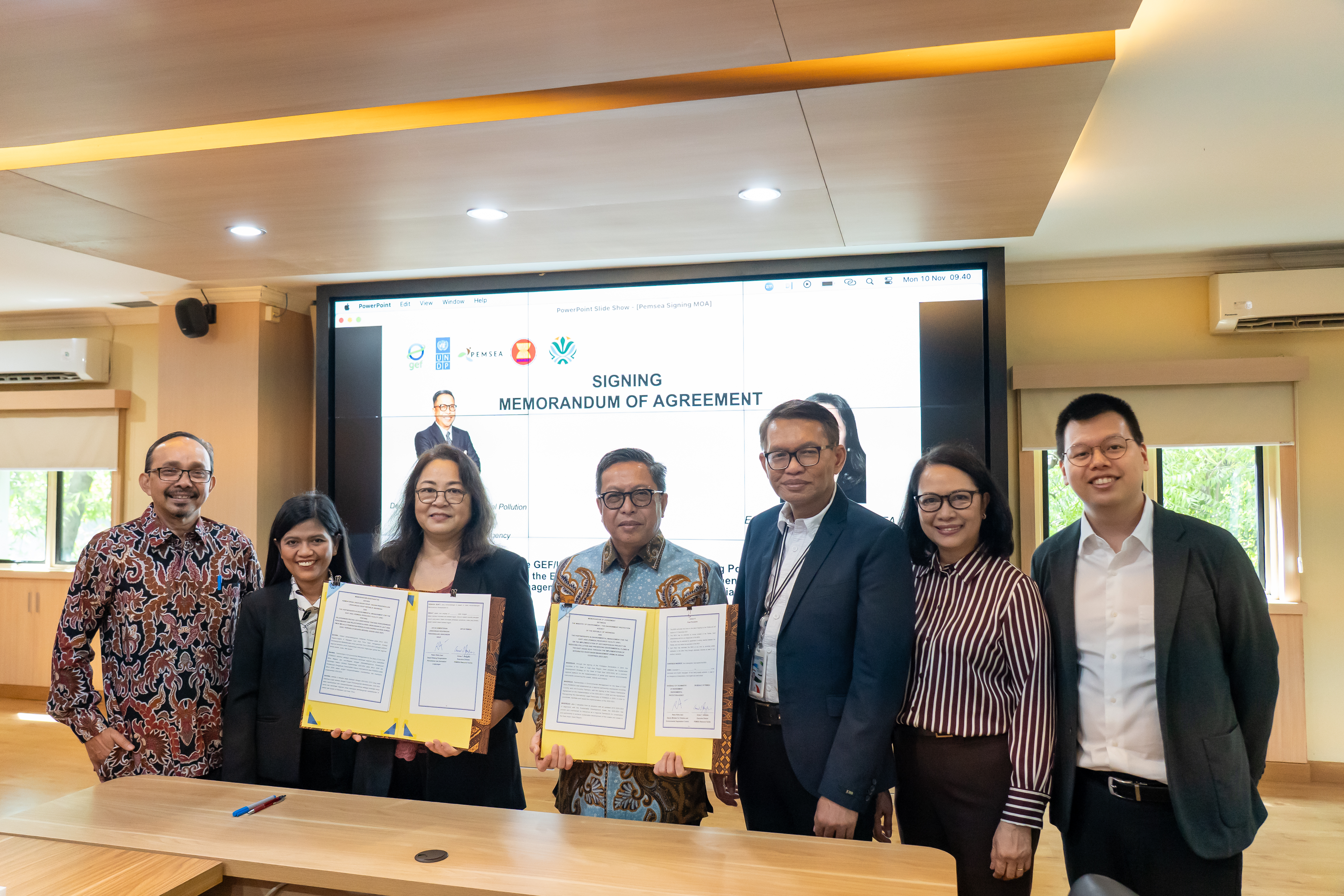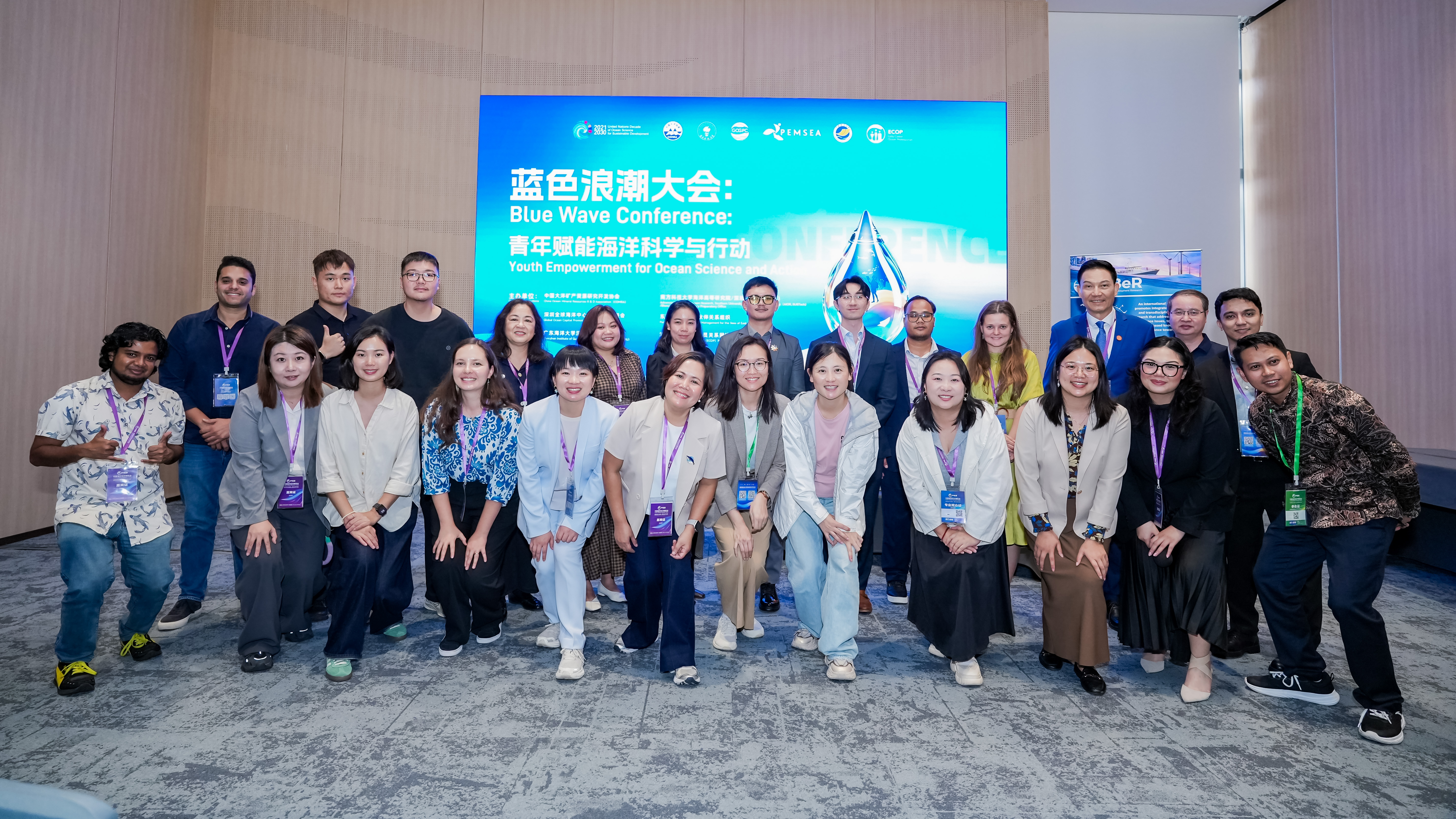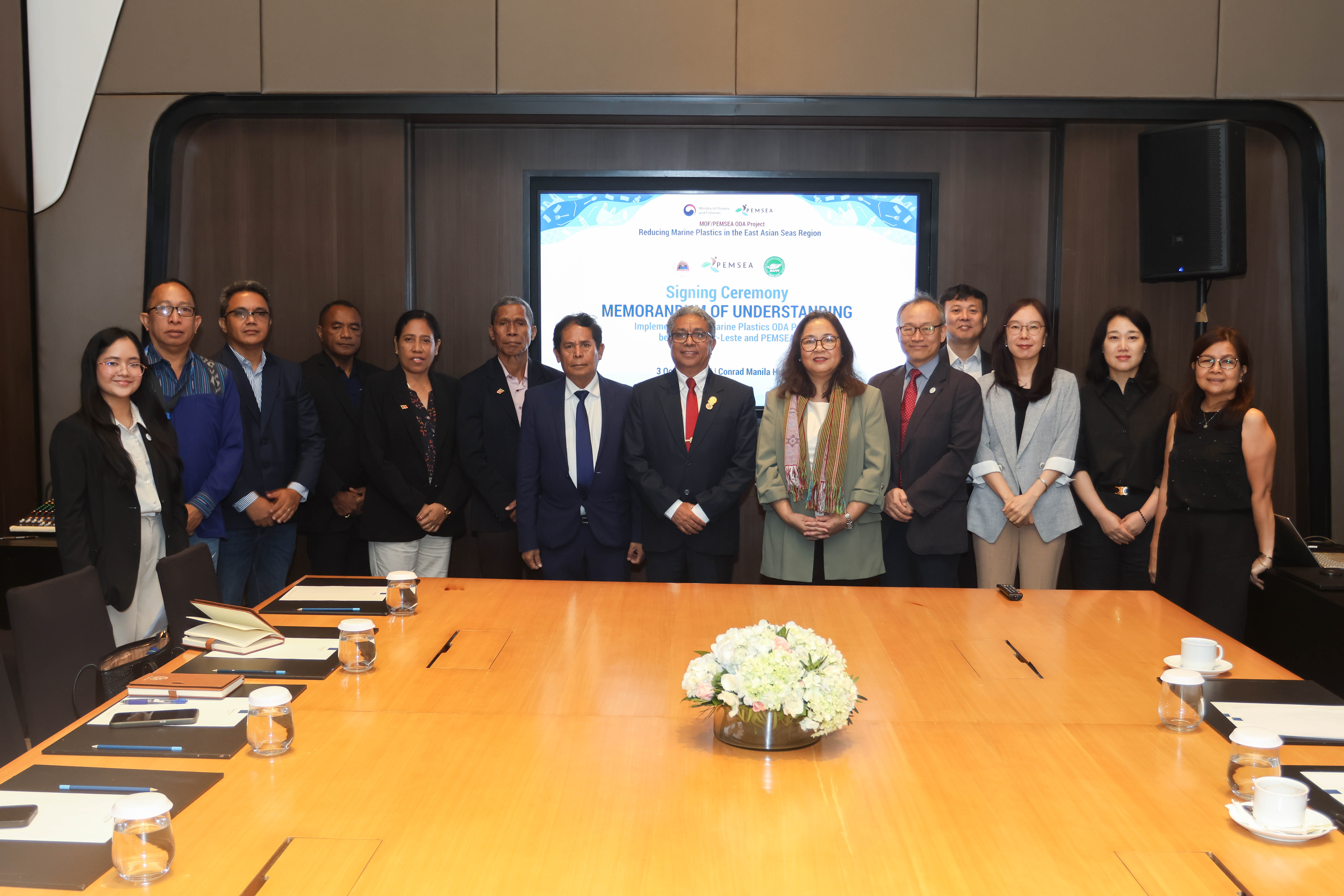A Step Forward Toward 2030: PEMSEA Holds 34th Expanded Executive Committee Meeting
Wednesday, 22 October 2025
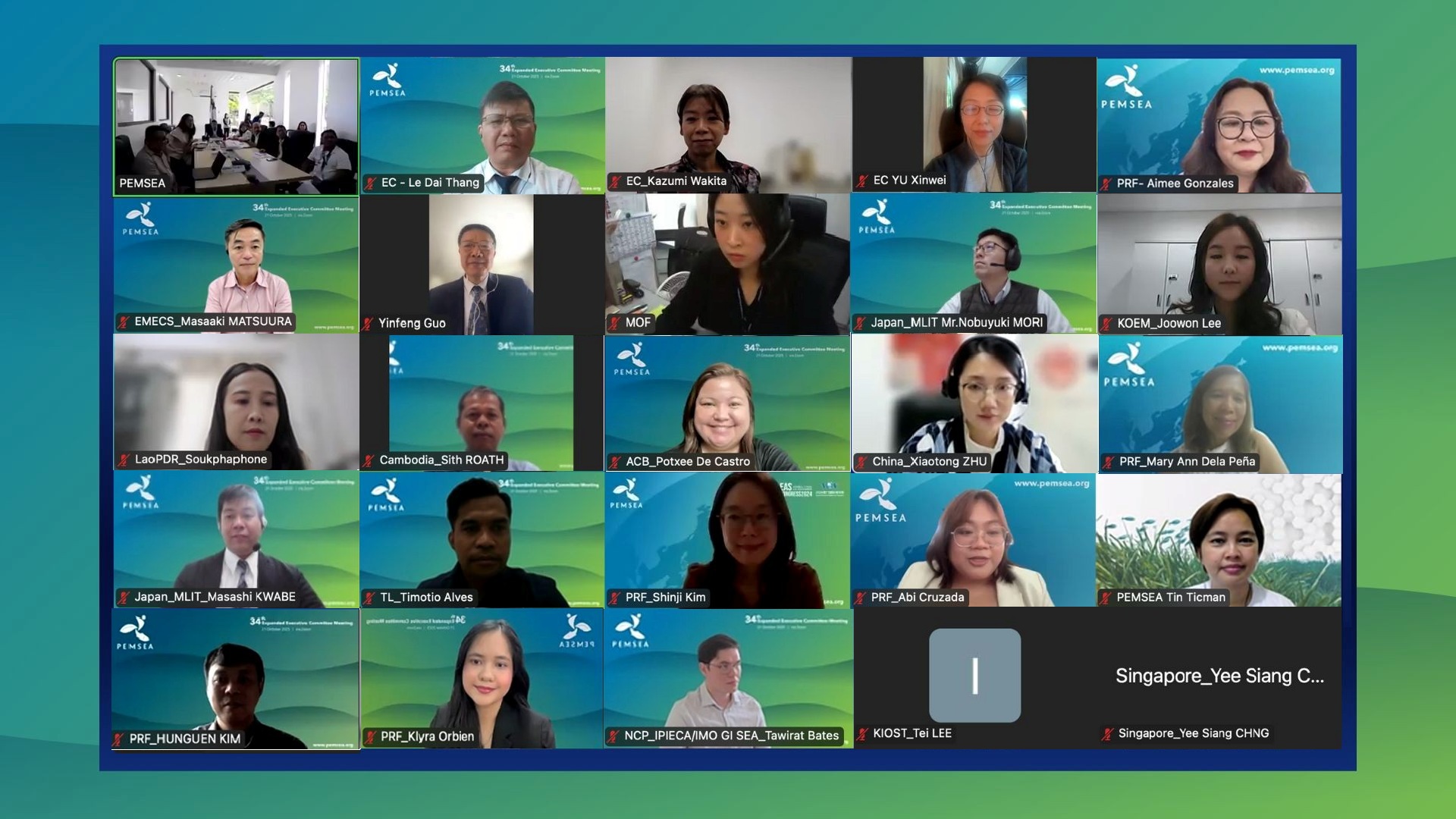
PEMSEA strengthened its commitment to regional cooperation on sustainable ocean governance as it convened the 34th Expanded Executive Committee (EC) Meeting on 21 October 2025, setting a clear implementation pathway toward 2030 global targets.
The virtual meeting gathered the PEMSEA Executive Committee, Country and Non-Country Partners, and Observers to review and deliberate strategic documents guiding the next phase of PEMSEA initiatives. These included the refined Implementation Plan of the Sustainable Development Strategy for the Seas of East Asia (SDS-SEA) and its Balanced Scorecard.
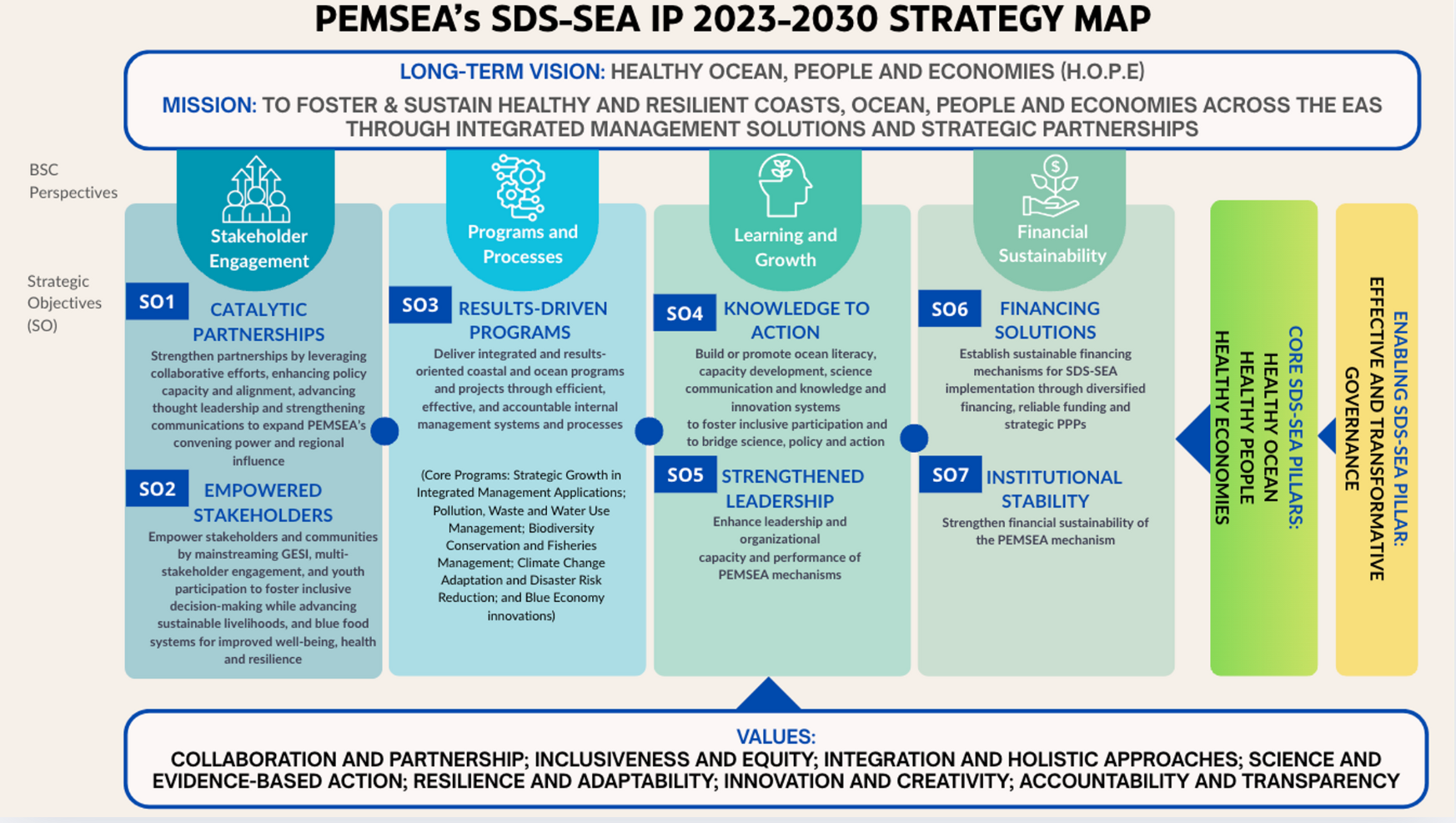
The updated plan aligns closely with the ten synergistic actions outlined in the 2024 Xiamen Declaration, the findings of the mid-term SDS-SEA IP review, recent status and trends analyses, and the outcomes of workshops from the Partnership Council Meeting held throughout 2025.
Under Effective and Transformative Governance, the plan emphasizes governance as a cross-cutting pillar, encompassing two clusters: PEMSEA institutional governance and coastal and ocean governance, both of which underpin all other thematic pillars. The Gender Equality and Social Inclusion (GESI) program has been expanded to include broader stakeholder engagement and now carries a dedicated target for strengthening youth participation in ocean and coastal initiatives.
The revised SDS-SEA IP sets more concrete and measurable targets, reflecting ongoing and upcoming country and non country partners’ programs and PRF-managed and supported projects. It builds upon progress achieved from 2023 to 2025 and introduces distinct objectives focused on communication science, knowledge, and innovation systems. Greater emphasis has been placed on research and development, and the use of scientific knowledge to reinforce the science-policy interface.
New thematic areas include Blue Food Systems, Nutrition, and Health, recognizing their integral role in fostering local and small blue economies. The plan further gives importance to linking with other regional Blue Economy programs and emerging sectors, while enhancing access to blue financing frameworks such as blue carbon markets, non-market mechanisms, and Environmental, Social, and Governance (ESG) instruments.
The Committee also reviewed results of the Organizational Capacity Assessment conducted for the PEMSEA Secretariat and soon to be expanded to Country Partners’ focal points and the PEMSEA Business Plan and Resource Mobilization Strategy, which aim to ensure operational sustainability and attract investment in blue economy initiatives across the region.
Regional Blue Carbon Framework Approved
A key outcome of the Expanded EC meeting was the approval of the Regional Blue Carbon Accounting Protocol (RBCAP) Main Manual which aims to standardize accounting for GHG emissions and removals in blue carbon ecosystems across EAS countries to support regional comparability, credibility, and serve as a basis for integration into NDCs national GHG inventories, and voluntary carbon marketsAdditionally, it will serve as a fundamental reference for certification under the PEMSEA BC program.
The RBCAP was developed in close alignment with international standards set by the Intergovernmental Panel on Climate Change (IPCC) and national accounting methodologies in the region. It provides methodologies for measuring carbon stocks and fluxes in various carbon pools, monitoring ecosystem changes, baseline scenario methods for project development, MRV, and a tiering system for eligibility.
Work is also underway to finalize the Mangrove and Seagrass Annexes of the protocol and to expand coverage to other coastal ecosystems, including salt marshes and tidal flats. These annexes will provide ecosystem-specific parameters and guidance with examples to improve comparability of carbon data across the region.
The EC further encouraged the identification of pilot sites that would serve as testing grounds for the RBCAP and to work with the PEMSEA Network of Learning Centers in building both national and regional capacity in blue carbon measurement, monitoring and management.
Preparations for 2026 Partnership Council Meeting
The EC also endorsed upcoming preparatory activities leading to the 18th East Asian Seas Partnership Council Meeting in July 2026, which will review regional progress and chart the next phase of implementation under the refined SDS-SEA.
In his closing remarks, East Asian Seas (EAS) Partnership Council Chair and DENR Undersecretary for Policy, Planning, and International Affairs, Atty. Jonas Leones commended members for their active participation and constructive guidance throughout the meeting.
He noted that the discussions and decisions reached during the meeting, from strengthening the implementation of the Partnership’s regional strategy to advancing regional work on blue carbon, was a major step forward to empowering countries in the East Asian Seas. These collective actions, he said, are essential to ensuring that PEMSEA continues to strengthen Integrated Coastal Management (ICM) implementation, build resilient coastal communities, enhance credible blue carbon accounting, and improve access to financing for ocean and climate action.
“Let us sustain this momentum, working together, supporting one another, and ensuring that PEMSEA continues to stand as a model of regional cooperation for healthy oceans, healthy people, and healthy economies,” Usec. Leones said.

